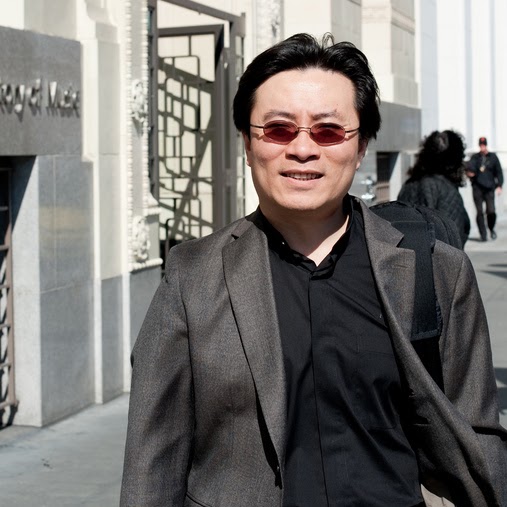Wei He
age ~43
from Santa Clara, CA
- Also known as:
-
- Susan Maxwell
- Dianne Maxwell
Wei He Phones & Addresses
- Santa Clara, CA
- Portland, OR
- Hillsboro, OR
- El Cerrito, CA
- Riverside, CA
Resumes

Wei He Riverside, CA
view sourceWork:
Center for Environmental Research and Technology
Sep 2009 to Present
Graduate Student Researcher Engineering Modeling
Riverside, CA
Sep 2007 to Sep 2009
Teaching Assistant University of California, Riverside
Riverside, CA
Sep 2007 to Sep 2009
Graduate Student Researcher Industrial Product Manufacturing
Wuhan, China
May 2004 to Sep 2004
Intern
Sep 2009 to Present
Graduate Student Researcher Engineering Modeling
Riverside, CA
Sep 2007 to Sep 2009
Teaching Assistant University of California, Riverside
Riverside, CA
Sep 2007 to Sep 2009
Graduate Student Researcher Industrial Product Manufacturing
Wuhan, China
May 2004 to Sep 2004
Intern
Education:
University of California
Riverside, CA
Jan 2007 to Jan 2011
Ph.D. in Chemical Engineering Beihang University
2004 to 2007
M.S. in Environmental Engineering Beihang University
2000 to 2004
B.S. in Environmental Engineering
Riverside, CA
Jan 2007 to Jan 2011
Ph.D. in Chemical Engineering Beihang University
2004 to 2007
M.S. in Environmental Engineering Beihang University
2000 to 2004
B.S. in Environmental Engineering
Skills:
Engineering: Environmental Health & Safety Practice, Statistical Data Analysis, Statistical Experimental Design, Process Scale Up, Start-up, Rheology Modeling, Hydraulic Calculation, ASTM Standards, ASME Code. Analytical: Rheometer, Thermogravimetry Analyzer, Calorimeter, Mass Spectrometry, Scanning Electron Microscopy, Gas Chromatography, Laser Diffraction, Surface Electrokinetic Analysis, Total Organic Carbon Analyzer. Computer: Windows, MS-Office Suite, Process Flow Diagram/Piping & Instrumentation Diagram (PFD/P&ID) with MS-Visio/AutoCAD, Process Simulation (Aspen Plus, HYSYS), Life Cycle Analysis (GREET 2.7), Programmable Logic Controller (PLC) Configuration (Labview 7.2), Matlab.
Lawyers & Attorneys

Wei He - Lawyer
view sourceAddress:
Clifford Chance LLP
1065352288 (Office)
1065352288 (Office)
Licenses:
New York - Currently registered 2010
Education:
Cornell Law School
Specialties:
Antitrust / Trade Law - 34%
Arbitration - 33%
Litigation - 33%
Arbitration - 33%
Litigation - 33%
Isbn (Books And Publications)

Name / Title
Company / Classification
Phones & Addresses
President
PORTICO PUBLISHING COMPANY
1345 S Diamond Bar Blvd STE 2, Chino Hills, CA 91709
1345 S Diamond Bar Blvd, Pomona, CA 91765
1345 S Diamond Bar Blvd, Pomona, CA 91765
President
WH CALIFORNIA CORP
7097 Tennessee Riv Ct, Mira Loma, CA 91752
Owner
South Legend Restaurant
Eating Place · Full-Service Restaurants
Eating Place · Full-Service Restaurants
1720 N Milpitas Blvd, Milpitas, CA 95035
4089343970
4089343970
Jhk Investment, LLC
Investment · Investor
Investment · Investor
7097 Tennessee Riv Ct, Mira Loma, CA 91752
President
JH CALIFORNIA CORP
13545 Morning Mist Way, Chino Hills, CA 91709
President
HW CALIFORNIA CORP
7097 Tennessee Riv Ct, Mira Loma, CA 91752
President
WILL, INC
5820 Central Ave #3, Albany, CA 94706
5820 Central Ave, Richmond, CA 94530
5820 Central Ave, Richmond, CA 94530
President
S&H HIGHTECK
3567 Eggers Dr, Fremont, CA 94536
Us Patents
-
Apolipoprotein Nanodiscs With Telodendrimer
view source -
US Patent:20130165636, Jun 27, 2013
-
Filed:Dec 19, 2012
-
Appl. No.:13/719785
-
Inventors:The Regents of The University of California - Oakland CA, US
Wei He - Davis CA, US
Kit S. Lam - Davis CA, US
Paul Henderson - Dublin CA, US
Matt Coleman - Oakland CA, US -
Assignee:The Regents of the University of California - Oakland CA
-
International Classification:C07K 17/02
-
US Classification:530359, 435 681
-
Abstract:The present invention provides a nanodisc with a membrane scaffold protein. The nanodisc includes a membrane scaffold protein, a telodendrimer and a lipid. The membrane scaffold protein can be apolipoprotein. The telodendrimer has the general formula PEG-L-D-(R), wherein D is a dendritic polymer; L is a bond or a linker linked to the focal point group of the dendritic polymer; each PEG is a poly(ethylene glycol) polymer; each R is and end group of the dendritic polymer, or and end group with a covalently bound hydrophobic group, hydrophilic group, amphiphilic compound, or drug; and subscript n is an integer from 2 to 20. Cell free methods of making the nanodiscs are also provided.
-
Direct-Lit Backlight Units With Light-Emitting Diodes
view source -
US Patent:20230093750, Mar 23, 2023
-
Filed:Nov 4, 2021
-
Appl. No.:17/519221
-
Inventors:- Cupertino CA, US
Meizi Jiao - San Jose CA, US
Ling Han - Santa Clara CA, US
Chungjae Lee - San Jose CA, US
Ziruo Hong - San Jose CA, US
Wei He - Cupertino CA, US
Rong Liu - Sunnyvale CA, US
Xinyu Zhu - San Jose CA, US
Mingxia Gu - Campbell CA, US
Jun Qi - San Jose CA, US
Eric L. Benson - Hillsborough CA, US
Victor H. Yin - Cupertino CA, US -
International Classification:G02F 1/13357
-
Abstract:A display may have a pixel array such as a liquid crystal pixel array. The pixel array may be illuminated with backlight illumination from a direct-lit backlight unit. The backlight unit may include an array of light-emitting diodes (LEDs) on a printed circuit board. The display may have a notch to accommodate an input-output component. Reflective layers may be included in the notch. The backlight may include a color conversion layer with a property that varies as a function of position. The light-emitting diodes may be covered by a slab of encapsulant with recesses in an upper surface.
-
Electronic Device With Battery Capability Modeling
view source -
US Patent:20180345812, Dec 6, 2018
-
Filed:Aug 21, 2017
-
Appl. No.:15/682331
-
Inventors:- Cupertino CA, US
Yiming Lou - Cupertino CA, US
Wei He - Sunnyvale CA, US
Stephen D. Sterz - San Jose CA, US -
International Classification:B60L 11/18
G01R 31/36
H01M 10/48 -
Abstract:An electronic device may have a power system with a battery. The device may include power management circuitry that helps distribute power from the battery to components within the device. To prevent an excessive load from being applied to the battery and the battery from dropping below a cut-off voltage, power management circuitry may control power consumption by components in the device. Power consumption models in the power management circuitry may be used to ensure that maximum allowable power consumption levels are not exceeded. To help accurately and quickly manage power consumption decisions, each component may have characteristic power consumption values that characterize the power consumption profile of the component. These characteristic power consumption values may be provided to the power management circuitry with a request for power consumption and the power management circuitry may determine maximum allowable power consumption for the component based on the characteristic power consumption values.
Plaxo

Wei He
view sourceSingaporeSenior User Experience Designer at Hewlett Packard... Past: Human Factor Expert at Hewlett Packard, Senior User Experience Researcher at eBay, Senior...

He Wei
view sourceFortune Sun International

He Wei
view sourceMotorola
Classmates

Wei He
view sourceSchools:
Kempner High School Sugar Land TX 2004-2008
Community:
Daniel Varney, Ashley Njeako

Wei He
view sourceSchools:
Beijing Bayi High School Beijing China 1969-1973

He Wei, J.D. Jenkins Midd...
view source
Beijing Bayi High School...
view sourceGraduates:
Liang He (1996-2000),
Zhang Third (1991-1995),
Hai Bing He (1994-1998),
Cao Ming (1997-2001),
Wei He (1969-1973)
Zhang Third (1991-1995),
Hai Bing He (1994-1998),
Cao Ming (1997-2001),
Wei He (1969-1973)

Kingsview Middle School, ...
view sourceGraduates:
Wei He (2002-2005),
Cheng He (2002-2005),
Marissa Dunham (1995-1999),
Michael Borsiquot (2001-2005),
Hanna Yi (2000-2004),
Vincent Wasonga (2001-2005)
Cheng He (2002-2005),
Marissa Dunham (1995-1999),
Michael Borsiquot (2001-2005),
Hanna Yi (2000-2004),
Vincent Wasonga (2001-2005)

University of Manitoba, W...
view sourceGraduates:
Geoffrey Crofts (1942-1946),
Judy Qiang Wei He (2003-2007),
Raphael Fobister (1975-1979)
Judy Qiang Wei He (2003-2007),
Raphael Fobister (1975-1979)

Kempner High School, Suga...
view sourceGraduates:
Wei He (2004-2008),
Lauren Johnson (2004-2008),
Zak Shakhshir (2003-2007),
Spurling Ruppert (1973-1977)
Lauren Johnson (2004-2008),
Zak Shakhshir (2003-2007),
Spurling Ruppert (1973-1977)

J.D. Jenkins Middle Schoo...
view sourceGraduates:
Tanya Garner (1989-1993),
He Wei (2004-2008),
Vicki Boggs (1985-1987),
Carol Zimmerly (1981-1982),
Jt Robinson (1982-1983),
Camelia Benitez (1983-1987)
He Wei (2004-2008),
Vicki Boggs (1985-1987),
Carol Zimmerly (1981-1982),
Jt Robinson (1982-1983),
Camelia Benitez (1983-1987)
Youtube
Myspace
Googleplus

Wei He
Work:
IBM
Education:
Georgia Institute of Technology - Industrial Engineering, National University of Singapore - Supply Chain Management

Wei He
Work:
San francisco conservatory of music - Violin faculty
Tagline:
Wei he violinist violin faculty san francisco conservatory of music

Wei He
Tagline:
DataMining rationality art literature sprite English university America freedom IT

Wei He

Wei He

Wei He

Wei He
About:
FORDHAM UNIVERSITY MSQF

Wei He

Wei He
view source
Wei Xin He
view source
Wei He
view source
Wei He
view source
Wei He
view source
Wei He
view source
Wei He
view source
Wei He
view sourceFlickr
Get Report for Wei He from Santa Clara, CA, age ~43












